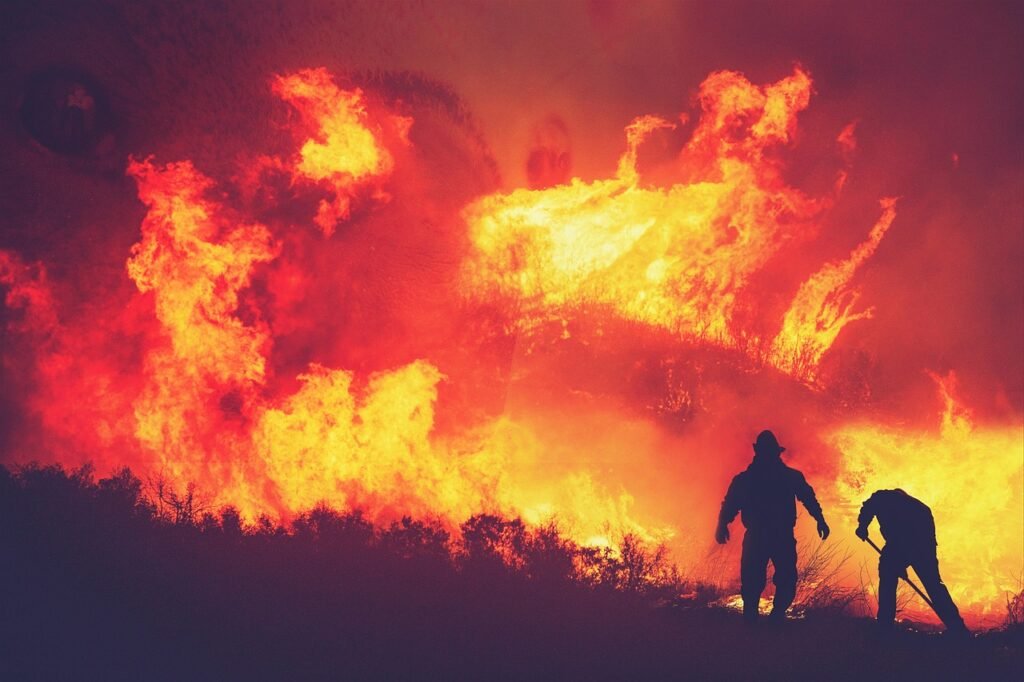You might have noticed the weather feels different lately. The storms are stronger, the temperatures more extreme, and the patterns less predictable than what your grandparents described. What you’re witnessing isn’t just random variation or a particularly bad year. Instead, you’re seeing the early signs of a fundamental shift in Earth’s climate system that scientists say marks the beginning of a new atmospheric age.
The planet’s weather machine has operated within relatively stable parameters for thousands of years, but recent data shows we’ve pushed it beyond its normal boundaries. While climate has always changed naturally over long periods, the speed and intensity of current changes are unprecedented in human history. Let’s dive into seven clear indicators that show we’re entering uncharted meteorological territory.
Record-Breaking Heat That Keeps Breaking Records

You’re living through the hottest period in recorded human history, and each year seems determined to outdo the last. Recent global surface temperatures have been consistently breaking records, with monthly temperatures regularly exceeding 20th-century averages by significant margins.
What makes this particularly striking is that The new January global record is particularly notable for having occurred during a La Niña episode, the cold phase of El Niño Southern Oscillation (ENSO). Global temperatures tend to be cooler during periods of ENSO-neutral conditions and even cooler during La Niña. This means we’re setting temperature records even during conditions that should naturally cool the planet.
The WMO report forecasts that the annually averaged global mean near-surface temperature for each year between 2025 and 2029 is predicted to be between 1.2°C and 1.9°C higher than the average over the years 1850-1900. This isn’t just a temporary spike, but a sustained shift toward a hotter baseline that will define your future weather experiences.
Ocean Temperatures Racing Beyond All Expectations

Ocean surface temperatures are warming at an accelerating rate compared to previous decades, with current warming rates significantly higher than those observed in the 1980s. The oceans act as Earth’s massive heat storage system, and when they warm this rapidly, it fundamentally changes everything about how weather works.
The ocean is storing an estimated 91 percent of the excess heat energy trapped in the Earth’s climate system by excess greenhouse gases. This heat doesn’t just stay in the water. It powers stronger storms, creates marine heat waves, and drives more intense precipitation patterns that you experience on land.
During 2023 and 2024, global sea surface temperatures jumped to record-shattering levels – fueling stronger Atlantic hurricanes and causing widespread marine heat waves and severe coral bleaching along Florida coasts and across the Caribbean. This surge in ocean temperatures would have been virtually impossible without human-caused climate change.
Extreme Weather Events Becoming the Daily Norm

The term “unprecedented” has become overused in weather reporting, but that’s because truly unprecedented events are happening with alarming frequency. In Northern Minnesota, wildfires that spread from record heat, “unprecedented” weather conditions, and dead trees infested by the eastern spruce budworm. These are conditions that local ecosystems have never experienced before.
June 22-25 – An unusually strong ridge of high pressure occurred over the central and eastern United States impacting millions of people with the temperatures breaking records. On June 24, Augusta, Maine set their all time high temperature record of 100 °F (38 °C), with Plattsburgh, New York tying their all time high temperature record on June 23 at 101 °F (38 °C).
The average length of time between billion-dollar disasters fell from 82 days during the 1980s to 19 days during the last 10 years (2015-2024), according to Climate Central analysis. You’re now living in a world where major weather disasters occur roughly every three weeks instead of every three months.
Recent wildfire seasons in Southern California have resulted in significant casualties and property damage, reflecting the increasing intensity of extreme weather events globally.
Sea Levels Rising at Accelerating Speeds

For around 2,000 years, global sea levels hardly varied. That changed in the twentieth century. Sea levels started rising and have not stopped since – and now, the pace is accelerating. What you’re witnessing represents a complete departure from natural patterns that sustained human civilization for millennia.
The rate of annual sea level rise has more than doubled over the past 30 years, resulting in the global sea level increasing 4 inches since 1993. This acceleration means the flooding you see today in coastal areas will become routine, and areas that seem safe now may not be in the coming decades.
Oceans last year reached their highest levels in three decades – with the rate of global sea level rise increasing around 35 percent higher than expected, according to a NASA-led analysis published Thursday. The unexpected rise in global levels is concerning, particularly as an indicator for what to expect around coastal cities, many of which are already experiencing more damaging flooding.
Ice Sheets and Glaciers at Critical Tipping Points

The planet’s ice is disappearing at rates that surprise even climate scientists. Heat in the oceans and atmosphere is also driving melting of the Greenland and Antarctic ice sheets, which together hold enough fresh water to raise global sea levels by around 213 feet. While complete melting would take centuries, the acceleration in ice loss has immediate consequences for weather patterns worldwide.
For example, the Thwaites Glacier in Antarctica is disintegrating more quickly than anticipated. It’s nicknamed the ‘doomsday glacier’ because sea levels could rise more than three metres without it and its supporting ice shelves. This isn’t distant science fiction, but a current reality affecting weather systems across the globe.
In addition to near-record warmth, the start of 2025 has seen record-low sea ice cover in the Arctic between January and March – and the second-lowest minimum sea ice extent on record for Antarctica. These massive white surfaces usually reflect sunlight back to space, but as they shrink, darker ocean water absorbs more heat, accelerating the warming process.
Weather Systems Behaving in Completely New Ways

The jet streams, storm tracks, and pressure systems that create your local weather are shifting into patterns that have no historical precedent. A changing climate also reshapes complicated atmosphere and ocean patterns – sometimes introducing new or extraordinary weather outside of what people have experienced in the past. The deadly 2021 heat wave in the Pacific Northwest, for example, was demonstrably hotter because of climate change – but the atmospheric conditions that allowed it to occur in the first place were also essentially unprecedented in the region.
Alaska has experienced unprecedented heat waves and wildfire activity in recent years, with temperatures reaching record levels and significant increases in fire-prone conditions throughout the state’s interior regions.
But the impact of the steady increase in global temperature is now detectable in many extreme weather events – and likely many of the more normal ones, too, says Justin Mankin, a climate scientist at Dartmouth College. “The trends in climate are shaping new weather possibilities that were maybe unprecedented,” Mankin says.
Crossing the 1.5°C Threshold That Scientists Warned About

The global temperature increase that climate scientists have long warned would trigger dangerous changes has now arrived. There is a forecast 70% chance that the five-year average warming for 2025-2029 will be more than 1.5°C, according to the report. This is up from 47% in last year’s report (for the 2024-2028 period) and up from 32% in the 2023 report for the 2023-2027 period.
a study published in Nature Climate Change shows that the first single calendar year above 1.5 °C relative to pre-industrial levels in 2024 indicates that most probably Earth has already entered the 20-year period that will reach the Paris Agreement limit – that is, a 20-year period with average warming of 1.5 °C. This crossing of the symbolic threshold marks your entry into a climate regime that human civilization has never experienced.
There is now a 70% chance that global warming over the next five years will exceed 1.5 degrees Celsius, Wednesday’s report from the World Meteorological Organization and UK Met Office found. More than 1.5 degrees of global warming increases the risks of more severe impacts, including triggering tipping points in the climate system. Melting sea ice and glaciers could soon reach a point of no return, with dramatic implications for sea level rise, scientists have warned.
Conclusion

You’re witnessing the end of the stable climate that allowed human civilization to flourish and the beginning of something entirely new. The seven signs outlined here aren’t just temporary disruptions or natural cycles, but fundamental shifts in how Earth’s atmosphere and oceans operate. The weather patterns that guided your ancestors’ decisions about farming, building, and settlement are becoming obsolete.
While the science is clear about what’s happening, the exact timeline and regional impacts remain uncertain. What scientists agree on is that these changes will accelerate and intensify in the coming years. Understanding these shifts helps you prepare for a future where weather extremes become the baseline rather than the exception.
The planet’s weather has entered uncharted territory, and there’s no going back to the climate your grandparents knew. What do you think will be the most challenging aspect of adapting to this new atmospheric age? Tell us in the comments.




